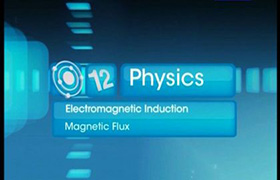JEE Class main Answered
Prove that when a shot is projected from a gun at any angle of elevation, the
shot as seen from the point of projection will appear to descend past vertical
target with uniform velocity.
18. A ball is projected with a velocity u at an elevation a from point distance from
a smooth vertical wall, it returns to the point of projection. Prove that
2
sin 2
gd
e
u gd ?
?
?
where e= coefficient of restitution. Hence find the maximum d
for which the ball can return to the point of projection.

Asked by dhandas060104 | 25 Oct, 2020, 11:53: AM
I do not understand Qn. No.17 , how the ball falls under gravitational field appears as falling with constant speed.
--------------------------
Qn. No. 18

if a ball is projected with initial velocity u with projection angle α , time taken t to travel horizontal distance d is given as
t = d / ( u cosα ) ...............(1)
Vertical distance travelled in above time t is determined from the equation ,
h = [ ( u sinα ) t ] - [ (1/2) g t2 ] ................(2)
By substituting t from eqn.(1) , we rewrite eqn.(2) as
 ................... (3)
................... (3)vertical component velocity uv after time t as mentioned in eqn.(1) is ,
uv = ( u sinα ) - ( g t ) = ( u sinα ) - [ ( gd ) / ( u cosα ) ]
uv = [ ( u2 sin2α ) - ( 2 g d ) ] / ( 2 u cosα ) ..............................(4)
After hitting the opposite wall the ball is reflected so that its magnitude of horizontal and vertical components are
multiplied by e which is coefficient of restitution .
It is given that ball returns back to same projection point .
Time taken t' to travel horizontal distance d during reverse motion
t' = d / ( e u cosα ) .....................(5)
Vertical distance travelled during this time given in eqn.(5)
h = ( -e uv ) t' + (1/2) g t' 2 ..................(6)
By substituting uv from eqn.(4) and t' from eqn.(5), we rewrite eqn.(6) after simplification as
 .....................(7)
.....................(7)Since the vertical distances travelled in forward motion and backward motion are same ,
we equate eqn.(3) and (7) and after simplification , we get





Answered by Thiyagarajan K | 25 Oct, 2020, 21:14: PM
Application Videos
Concept Videos
JEE main - Physics
Asked by sumalathamadarapu9 | 23 Oct, 2024, 22:06: PM
JEE main - Physics
Asked by py309649 | 13 Oct, 2024, 13:39: PM
JEE main - Physics
Asked by coolskrish | 13 Oct, 2024, 12:50: PM
JEE main - Physics
Asked by midnightmoon3355 | 09 Oct, 2024, 09:09: AM
JEE main - Physics
Asked by rambabunaidu4455 | 03 Oct, 2024, 16:03: PM
JEE main - Physics
Asked by ratchanavalli07 | 17 Sep, 2024, 07:46: AM
JEE main - Physics
Asked by yayashvadutta45 | 15 Sep, 2024, 19:47: PM
JEE main - Physics
Asked by adithireddy999 | 03 Sep, 2024, 09:35: AM
JEE main - Physics
Asked by vaishalinirmal739 | 29 Aug, 2024, 18:07: PM
JEE main - Physics
Asked by vradhysyam | 26 Aug, 2024, 17:17: PM










